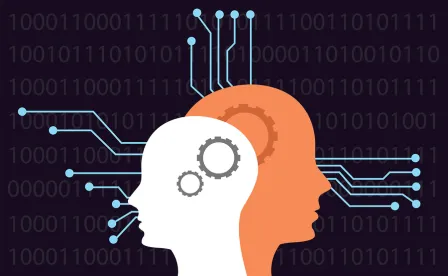The US Court of Appeals for the Federal Circuit upheld a Patent Trial and Appeal Board (PTAB) finding of obviousness over a patent owner’s challenge to the “combination” of prior art, explaining that no motivation to combine need be shown where a secondary reference is simply used to explain how a person of ordinary skill would have interpreted a primary reference. Realtime Data, LLC v. Iancu, Case No. 18-1154 (Fed. Cir. Jan. 10, 2019) (Stoll, J).
Hewlett Packard (HP) was granted inter partes review of a patent owned by Realtime Data covering a method for lossless data compression and decompression using a system known as dictionary-based encoding. HP argued that a previously issued patent (O’Brien) disclosed all claim elements of Realtime’s patent. However, O’Brien did not explicitly use the term “dictionary-based encoding,” which appeared in the claims of Realtime’s patent. Instead, O’Brien used the equivalent term “string encoding.” HP used a 1992 data compression textbook (Nelson) to show that a person of ordinary skill in the art would have recognized that O’Brien’s “string encoding” was the same thing as “dictionary-based encoding.” The PTAB found that the challenged claims would have been obvious over O’Brien either alone or in further view of Nelson. Realtime appealed.
Realtime argued that the PTAB erred in its determination that a person of ordinary skill would have been motivated to combine the teachings of O’Brien and Nelson.
The Federal Circuit found that the PTAB did not err in its motivation-to-combine analysis, stating that “the Board was not required to make any finding regarding a motivation to combine given its reliance on [one] reference alone,” because the Nelson reference was not used to show any particular element or teaching of the prior art. Rather, all of the claimed elements were disclosed by O’Brien, and the PTAB merely used Nelson to explain that a person of ordinary skill in the art would have understood O’Brien’s string encoding to be the same as the claimed dictionary-based encoding. The Court noted that the PTAB may have even used O’Brien as anticipatory prior art in this situation, but the Court’s choice not to do so did not preclude O’Brien’s use as an obviousness reference, since “a disclosure that anticipates under § 102 also renders the claim invalid under § 103, for anticipation is the epitome of obviousness.”
Practice Note: No motivation to combine is required when a first reference discloses each element of the claims and a second reference is used solely to explain some aspect of the first reference—as opposed to use of the second reference to show an additional element or teaching.
William C. Rose, an intellectual property litigation law clerk based in the Washington, DC office, also contributed to this article.




 />i
/>i

